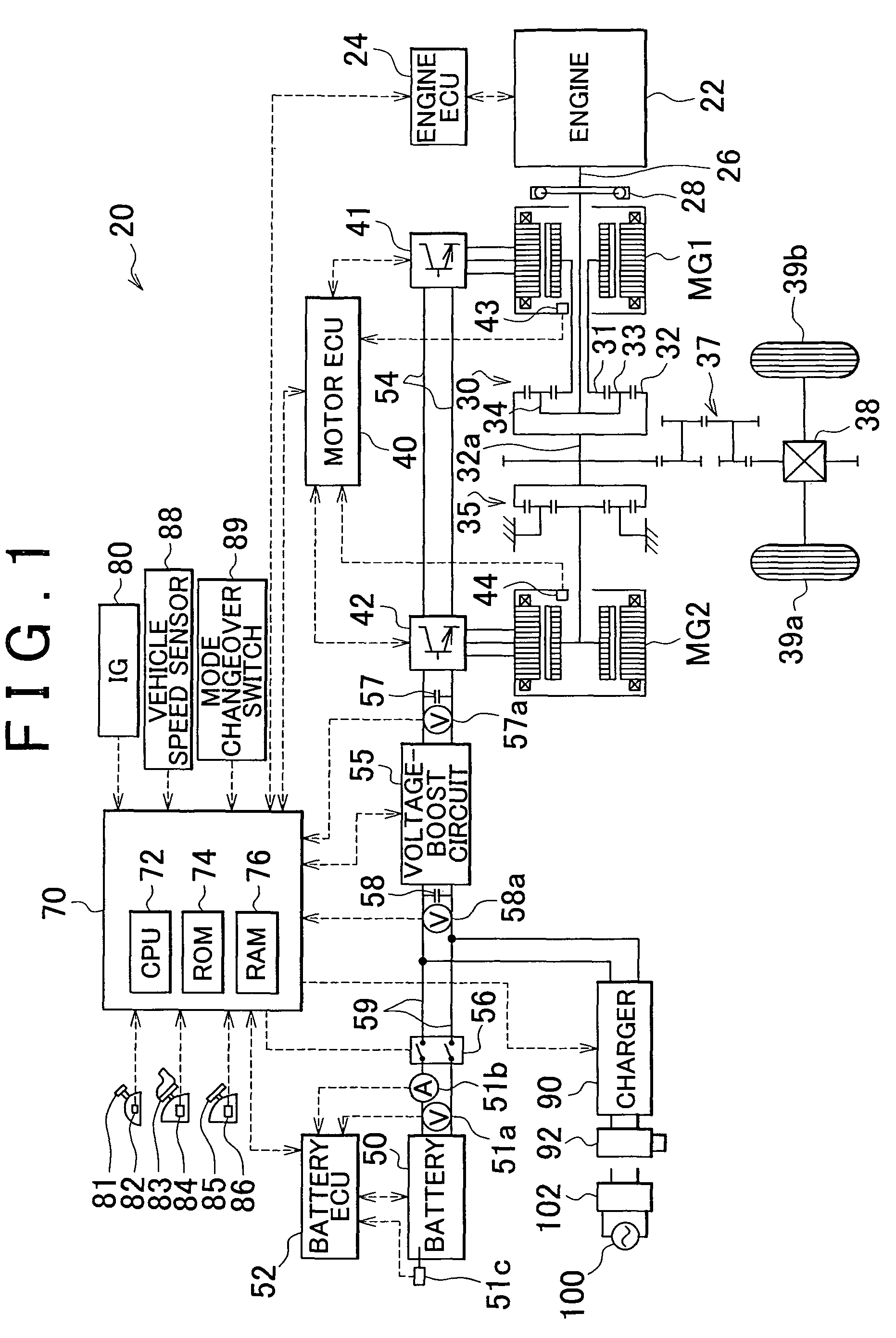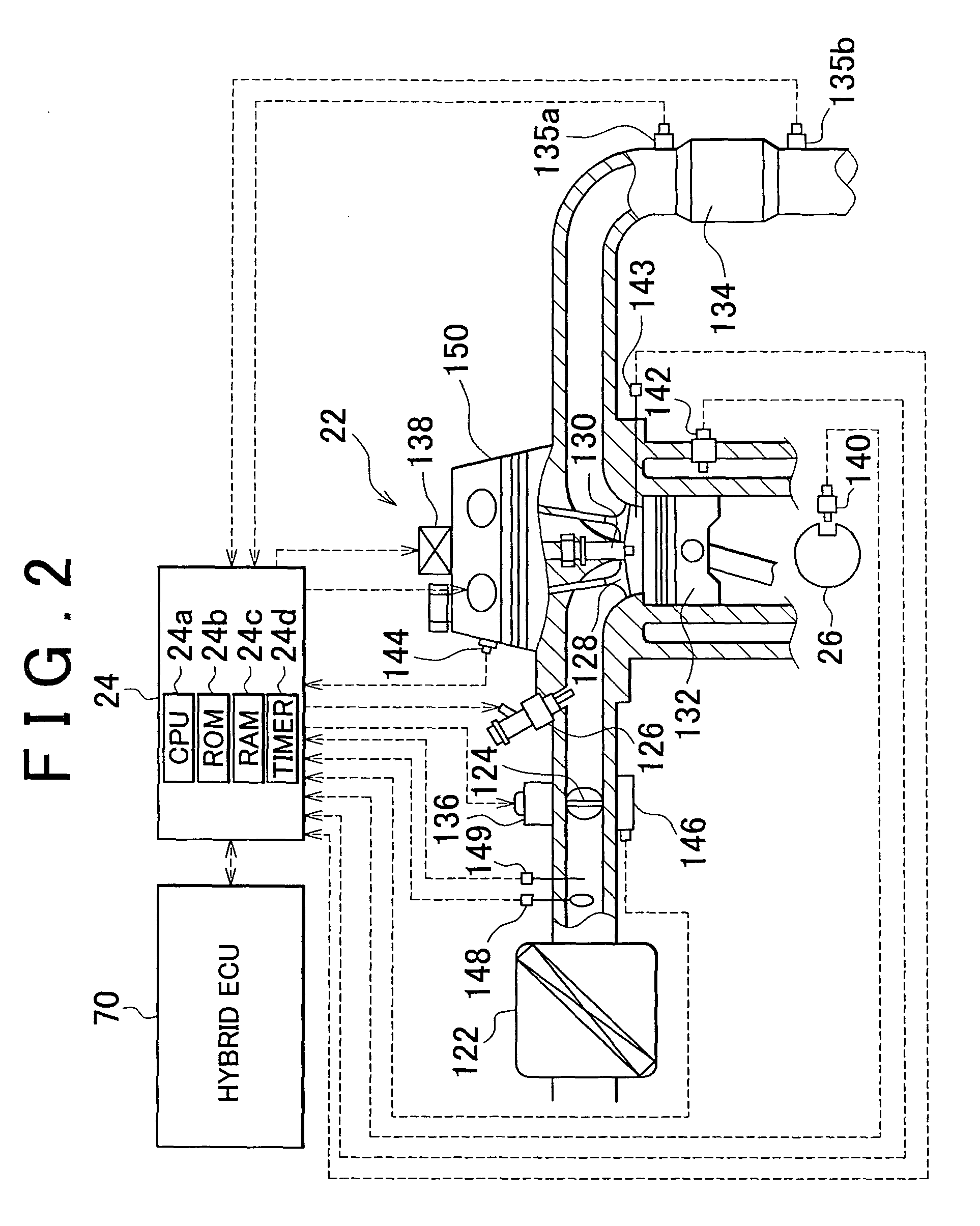Hybrid vehicle and control method for the same
a hybrid vehicle and control method technology, applied in the direction of machines/engines, process and machine control, instruments, etc., can solve the problems of driver or occupant discomfort, etc., to suppress sudden change in operation points.
- Summary
- Abstract
- Description
- Claims
- Application Information
AI Technical Summary
Benefits of technology
Problems solved by technology
Method used
Image
Examples
Embodiment Construction
[0034]An embodiment of the invention will be described with reference to the drawings. FIG. 1 is a configuration diagram showing the schematic configuration of a hybrid vehicle 20 according to the embodiment of the invention. As shown in FIG. 1, the hybrid vehicle 20 according to the embodiment includes an engine 22, a three-axis power split / integration mechanism 30, a motor MG1, a motor MG2, inverters 41 and 42, a battery 50, a voltage-boost circuit 55, a system main relay 56, a charger 90, and a hybrid electronic control unit (hereinafter, referred to as “hybrid ECU”) 70. The engine 22 is configured as an internal combustion engine that outputs power using, for example, hydrocarbon fuel such as gasoline or light oil. The power split / integration mechanism 30 is configured as a planetary gear mechanism. In the power split / integration mechanism 30, a carrier 34 is coupled to a plurality of pinions 33, and is connected to a crankshaft 26 that is an output shaft of the engine 22 throug...
PUM
 Login to View More
Login to View More Abstract
Description
Claims
Application Information
 Login to View More
Login to View More - R&D
- Intellectual Property
- Life Sciences
- Materials
- Tech Scout
- Unparalleled Data Quality
- Higher Quality Content
- 60% Fewer Hallucinations
Browse by: Latest US Patents, China's latest patents, Technical Efficacy Thesaurus, Application Domain, Technology Topic, Popular Technical Reports.
© 2025 PatSnap. All rights reserved.Legal|Privacy policy|Modern Slavery Act Transparency Statement|Sitemap|About US| Contact US: help@patsnap.com



